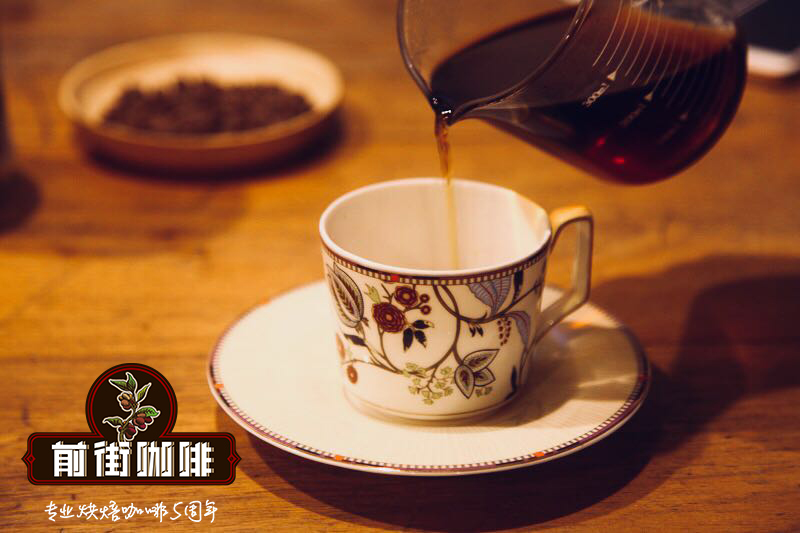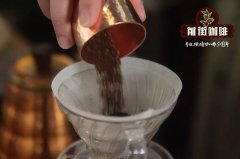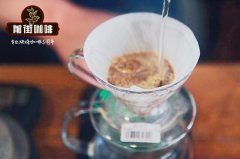El Salvador Ates Manor Coffee beans recommended _ handkerchief Camara Coffee what do you need to pay attention to

Professional coffee knowledge exchange more coffee bean information please follow the coffee workshop (Wechat official account cafe_style)
Pacamara Coffee at Manor Ates in El Salvador
Raw beans and baking information:
Grade: SHB
Grade: SHB
Tree species: Pacamara
Varietal:Pacamara
Country of origin: El Salvador
Country of origin: Salvador
Coffee Manor: Artes Manor
Farm: Finca Ataisi
Growth altitude: 1800 m
Altitude Range: 1800 m
Flavor introduction: walnut, flower fragrance, toffee, apricot
Flavor: Walnut,Floral,toffee, chocolate,Apricot
Treatment: washing
Processing Method: Washed

Finca Ataisi Atais Manor Information Story introduction:
Finca Ataisi Manor is located in the volcanic producing area of Izalco (Izakou) region, Sonsonate Province, El Salvador. Due to volcanoes, the soil of the manor is very rich in organic matter. The average elevation of the manor is about 1800 meters and the terrain is steep. It is one of the highest manors in the area. At present, the owner of the manor is run by Mr. Rene Martin. Mr. Rene Martin's idea is to maintain the original traditional planting method of El Salvador as far as possible. In addition to the necessary pruning and irrigation outside the garden to maintain a wide range of natural agroforestry ecology, more than 90% of the manor planted Pakamara varieties.
In addition to excellent planting, Finca Ataisi Manor also has its own coffee washing facilities, in addition to avoiding price exploitation to outsiders, the best thing is that it can be more rigorous in dealing with the coffee red fruits harvested. Rene Martin is very rigorous in the process of washing treatment, in addition to regularly recording the temperature and humidity of the day, it is also necessary to pay attention to the treatment of raw coffee beans in the fermentation tank.
In 2004, other coffee farmers in El Salvador and Honduras got good results in the COE competition with Pacamara. In 2005, Pacamara won the 2nd, 5th, 6th and 7th places of El COE in 2005, and the top four in 2006. Manors began to compete with Pacamara in 2008, and they may win COE championships for three consecutive years and two championships in 12-13 years. In the 2016 "Best El Salvador (best of salvardo 2016)" competition, there were 11 Pakamara in the top 16, and even more amazingly, Pacamara won the top eight. Pakamara is famous for competing with all kinds of planting roses and called it bright for a while.

Introduction of Pacamara coffee bean varieties:
Pacamara, a new hybrid born in El Salvador in 1958, is a cross between bourbon Pacas (Pacas) and iron card elephant bean (Maragogype). It has the advantages of both, but it is better than blue! Pure and soft, mellow and smooth, acidity lively, full flavor, long finish, amazing. Pacamara is a hybrid breed artificially bred in El Salvador in 1958. Its parents are Pacas and Maragogype. It has the excellent taste of Pacas, and the raw bean particles inherit the large size of Maragogipe. The bean body is at least 70% and 80% of that of beans, with more than 17 orders, 100% and more than 18 eyes. Average bean length 1.03 cm (general bean about 0.8-0.85 cm) average bean width 0.71 cm (general bean about 0.6-0.65), thickness 0.37 cm, bean shape plump and round. Pakamara is a combination of the first four letters of his "parents": Paca+mara=Pacamara.
Pacamara stunned people on COE in El Salvador in 2005. In the top ten, Pakamara bean seed occupies the second, fifth, sixth and seventh place!
In 2007, the Pacamara breed won the COE championships of Guatemala and El Salvador. Since then, Pakamara has been out of control on the road of winning the award, has occupied the forefront of the list of major events for a long time, and is known as a rookie variety as famous as Rosa in the world.
On COE in Guatemala alone, Pakamara won the title in seven of those 10 years in 2008 / 2017.
Due to the unnatural performance of Pacamara on the field, in 2017, the BOP (Best of Panama) international competition group decided to compete as a separate group.
However, Rao still has some disadvantages: Pacamara has high requirements for soil and water, climate, environment and altitude, and its yield is not high and its resistance to leaf rust is low, so its planting popularization rate is not high.
Today, although Pacamara is no longer particularly rare, it is still not a very common bean in the market. In particular, Pakamara is best produced in Guatemala and El Salvador, with a large number of international pursuers, so it is even more rare for those who can reach the country.

Introduction to the treatment method:
Washing (Washed Process)
In view of the disadvantages of the traditional solarization method, the water washing method comes along with it. First, most of the pulp of the harvested fruit is separated from the coffee beans by a peeling machine, then directed to a clean tank, soaked in water for fermentation to completely remove the residual pulp layer, and then dried in the sun or by machine, reducing the water content to 12%. As the water washing method has first removed the pulp, so in the drying process, will not worry about mildew, moth-eaten problems like the sun method.
(↑ peeling machine to remove pulp) (↑ soaking in water to ferment) (↑ paving and drying)
The flavor of sun-dried beans is rich and full, and the layered feeling is very distinct and diverse, while water-washed beans have a very clean and refreshing taste, with obvious acidity, and different treatments make coffee beans have a distinctive aroma.

Baking suggestions / Analysis:
The variety of this coffee is giant bean [Pacamara] with relatively large granules and high density, and the newly produced kidney beans have high moisture content. The heat absorption is relatively slow in the baking process, and the Mena reaction process is also relatively fast. The yellowing point is about 5 minutes. In the first baking, you can try to lower the bean temperature slightly, for example, the bean temperature is 200 degrees, and the firepower is also relatively increased. In the baking process, gradually adjust the firepower as needed: adjust the firepower after the beans enter the yellowing point to prolong the dehydration time, so that the giant beans can be fully dehydrated. Before an explosion after dehydration, you can properly maintain medium heat or slightly increase the firepower, accelerate the Mena reaction time, and ensure the pressure before the explosion; the precursor of an explosion needs to adjust the firepower properly to avoid bean watch burns. Under this method of operation, the dehydration time of coffee is relatively prolonged, with a heating rate of 6-8 degrees every 30 seconds, but it can also maintain a normal explosion between 8 and a half minutes and 9 and a half minutes, preserving more flower and fruit aroma and keeping clean and bright acidity. It is usually recommended to drop beans between the dense back section of an explosion and the end of an explosion, and bake about moderately.
Cup test flavor description:
Flavor description: walnut, flower fragrance, toffee, apricot

Cooking analysis:
Today, we introduce the common method of making Pacamara coffee in front street: V60 three-stage water injection method.
Extract by stages, pour all the cooking water into three stages.
Suitable for light, medium and medium roasted coffee beans
Use filter cup V60 cup
Increasing the steaming time or water cut-off times can improve the rich taste of the coffee.
Segmented extraction method of three-stage water injection
Advantages: it is richer than the one-knife flow, and can clarify the flavor of the front, middle and back of the coffee. The method is to increase the amount of water injection each time after steaming, usually when the coffee liquid is about to drop to the surface of the powder layer, and use small, medium and large water flow to do three-stage extraction.
Disadvantages: there will be relatively high requirements for the flow rate and flow rate of water.
Qianjie [suggestion of Pacamara Coffee hand punching parameters]
Brewing with V60 filter cup can improve the layering of hand flavor and make it richer and cleaner to drink; the bright aroma of Pacamara variety can be fully displayed.
15g powder, water temperature 89-90 degrees, grinding BG 5R (64% pass rate of Chinese standard 20 sieve), water powder ratio close to 1:15-16
Technique: 27g water steaming, steaming time for 30s. The hot water in the hand flushing pot draws a circle clockwise with the center of the filter cup in the middle of the filter cup, starts the time when brewing, injects water to 27g, then stops the injection and waits for 30 seconds to inject water for the first time.
When the first water injection is the same as before, the speed can be slowed down slightly, speed up a little when you go around the outer circle, cut off the water at about 1:15 seconds, and then inject water again when the liquid level drops 1 inch 3. The second water injection is concentrated on the central water injection. The water flow should not rush to the place where the coffee powder is connected with the filter paper, so as not to produce channel effect. Finish the extraction at about 2:05 seconds, and the longer the time is, the longer the extraction can be done. The astringent and rough taste will increase.
Segment: 30-125-230g
END
Important Notice :
前街咖啡 FrontStreet Coffee has moved to new addredd:
FrontStreet Coffee Address: 315,Donghua East Road,GuangZhou
Tel:020 38364473
- Prev

Hand rinse Little Bell Manor Water washing Pacamara Coffee Why is it sour? does it taste good?
Professional coffee knowledge exchange more information about coffee beans Please follow the coffee workshop (Wechat official account cafe_style) Finca los Cascabeles means Ling Ding in Spanish, so it is also called Little Ling Ding Manor. And its flavor is like a small bell, with smart sweetness and light flower fragrance. Xiaolingjie Manor Information Story: the smallest coffee grower in Central America
- Next

What is the ratio of gouache to powdered coffee made by the Pacamara hand in the Mamamina Manor in Nicaragua?
Professional coffee knowledge exchange more coffee bean information please follow the coffee workshop (Wechat official account cafe_style) Nicaragua Mamana family Mamana Manor Pacamara species 19 sifted sun treatment method Nicaragua Mierisch Family Finca Mamamina Pacamara Natural Mamana Manor Information Story introduction: this Nicaraguan Palmer
Related
- Detailed explanation of Jadeite planting Land in Panamanian Jadeite Manor introduction to the grading system of Jadeite competitive bidding, Red bid, Green bid and Rose Summer
- Story of Coffee planting in Brenka region of Costa Rica Stonehenge Manor anaerobic heavy honey treatment of flavor mouth
- What's on the barrel of Blue Mountain Coffee beans?
- Can American coffee also pull flowers? How to use hot American style to pull out a good-looking pattern?
- Can you make a cold extract with coffee beans? What is the right proportion for cold-extracted coffee formula?
- Indonesian PWN Gold Mandrine Coffee Origin Features Flavor How to Chong? Mandolin coffee is American.
- A brief introduction to the flavor characteristics of Brazilian yellow bourbon coffee beans
- What is the effect of different water quality on the flavor of cold-extracted coffee? What kind of water is best for brewing coffee?
- Why do you think of Rose Summer whenever you mention Panamanian coffee?
- Introduction to the characteristics of authentic blue mountain coffee bean producing areas? What is the CIB Coffee Authority in Jamaica?

